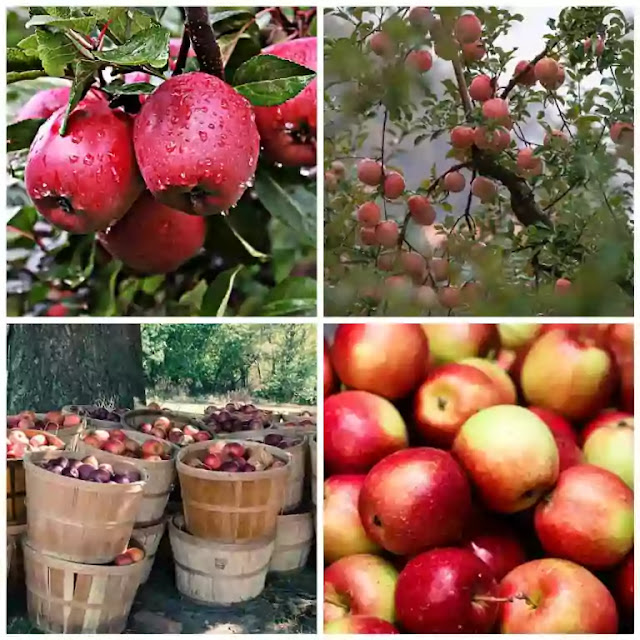An apple tree can live up to 70 years on average. India produces more than 2.3 million tonnes of apples per year. Globally, China is the highest apple-producing country with over 40 million tonnes of apple production.
Apple farming is a profitable business but you can't practice it everywhere.
Let's understand apple farming requirements, yield, and how much it cost you.
Apple farming and production per acre
An apple tree starts to produce apples after 4 to 5 years. From the fifth year, one tree can produce around 12 to 15 kg of apples one time in a year.
So what is the round figure or one-acre apple trees? Let's understand-
Apple yield per acre in India
In one acre land, with the space of 3x3 square meters for a single tree, it is possible to plant 450 apple trees easily.
One apple tree produce 12 to 15 kg of apples in a year, it means, 450 trees will produce 5,400 to 6,750 kg of apples in one year.
Apple farming project report
Before getting an estimation of investment cost and profit margin, you need to understand the requirements to grow apple trees.
Requirements to grow apple
Soil type and pH
For apple trees, soil pH must be between 5.5 to 6.5. The soil must be of well-draining quality and average fertility. Well, with the drainage of water, the soil must have the necessary moisture.
Climate and temperature
Apple is a cold and high moisture region fruit. It is found mostly in mountain regions. The average rain for the mountain region must be xx cm in a year.
As an apple grows in low temperatures, the temperature should be between x degrees to y degrees Celcius.
Fertilizers
Although there is a need for fertilizers for the rest of the year during flowering and fruiting, it is necessary.
The best-known fertilizer is organic compost which provides most of the important elements to the apple plants.
You can also use vermicompost instead of organic waste compost. During the seed sowing of apple trees, regular composting is important till the tree gets its first crop.
Irrigation
Although natural rain is enough for irrigation of apple trees but sometimes in odd climate expectations, irrigation is important.
Although apple tree soil contains almost the required moisture, in summers, it is important.
Mulching
It is natural that after losing the leaves in the autumn season, dry leaves turn into natural fertilizer for apple trees throughout the year. But in the initial stages of growing(for the first and second years), mulching is important to save plant life.
Season of growing apple
Although apple trees don't produce apples till their fourth or fifth year, after that they produce apples once each year.
From the end of May, apple trees start flowering. These flowers turn into green apples in between 90 to 120 days.
After 30 to 40 more days, these apples turn into red apples and are ready to harvest in 140 to 160 days.
The average month of harvesting apples is the end of September to October.
Apple farming investment
- Seeds cost- 500 INR/acre
- Fertilizers cost- 10,000 INR/year
- Irrigation water cost- 2,000 INR/year
- Total investment first year- 12,500 INR
- Total investment in the second year- 12,000 INR
- Total investment in the third year- 12,500 INR
- Total investment in the fourth year- 13,000 INR
Total investment in the fifth year- Same yearly investment+ cost of Labor, Transportation, and Marketing= 13,000 INR+9,000 INR+5,000 INR= 27,000 INR
Total investment in the sixth year: yearly investment+ cost of Labor, Transportation, and Marketing= 28,000 INR
Apple farming profit
- The total profit margin in the first year- 0 INR
- The total profit margin in the second year- 0 INR
- The total profit margin in the third year- 0 INR
- The total profit margin in the fourth year- 0 INR
The total profit margin in the fifth year
- The market price of 1 kg apple- 120 INR/kg
- The market price of total yield in 5th year- 6,48,000 INR to 8,10,000 INR
Total profit margin- Total yield price-Sum of 5 years investment= 6,48,000-67,000=5,81,000 INR to 8,10,000-67,000= 7,43,000 INR
The total profit margin in the sixth year- 6,50,000 INR to 8,20,000 INR

